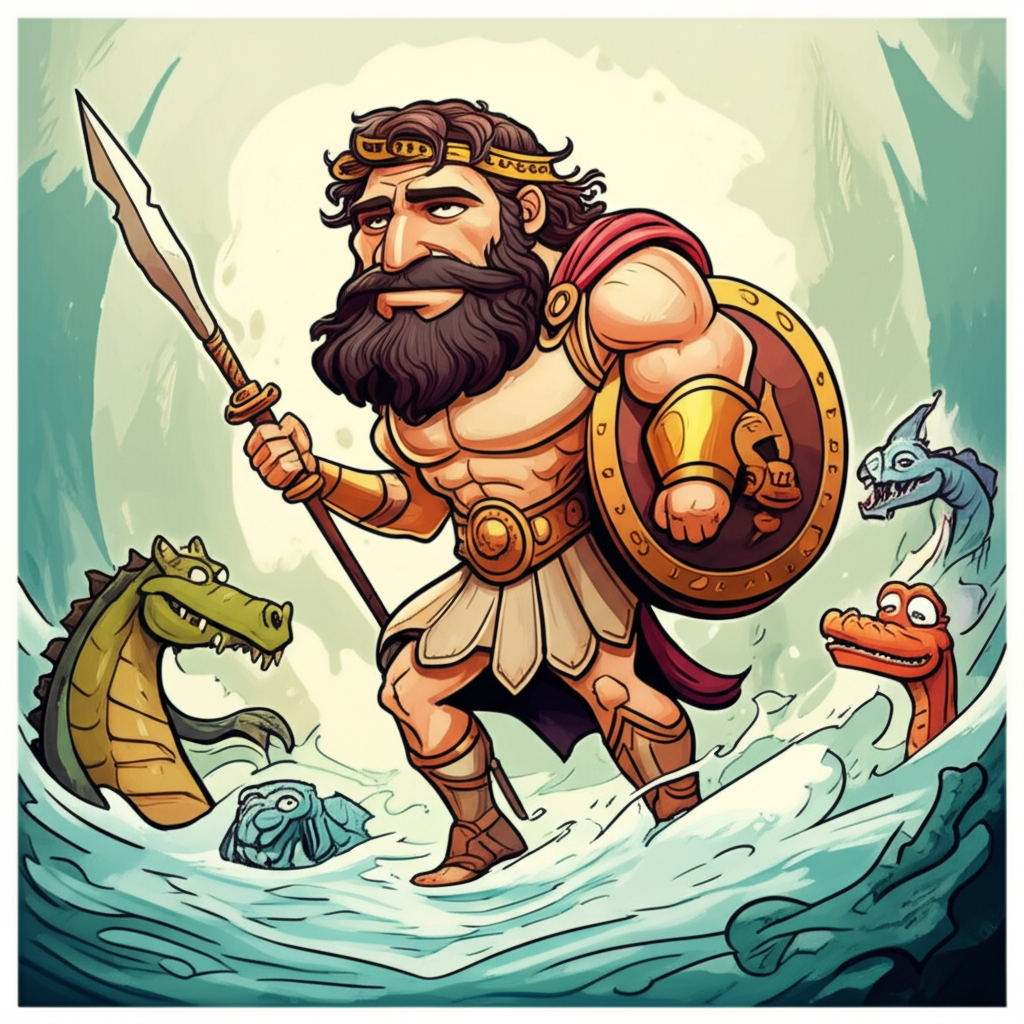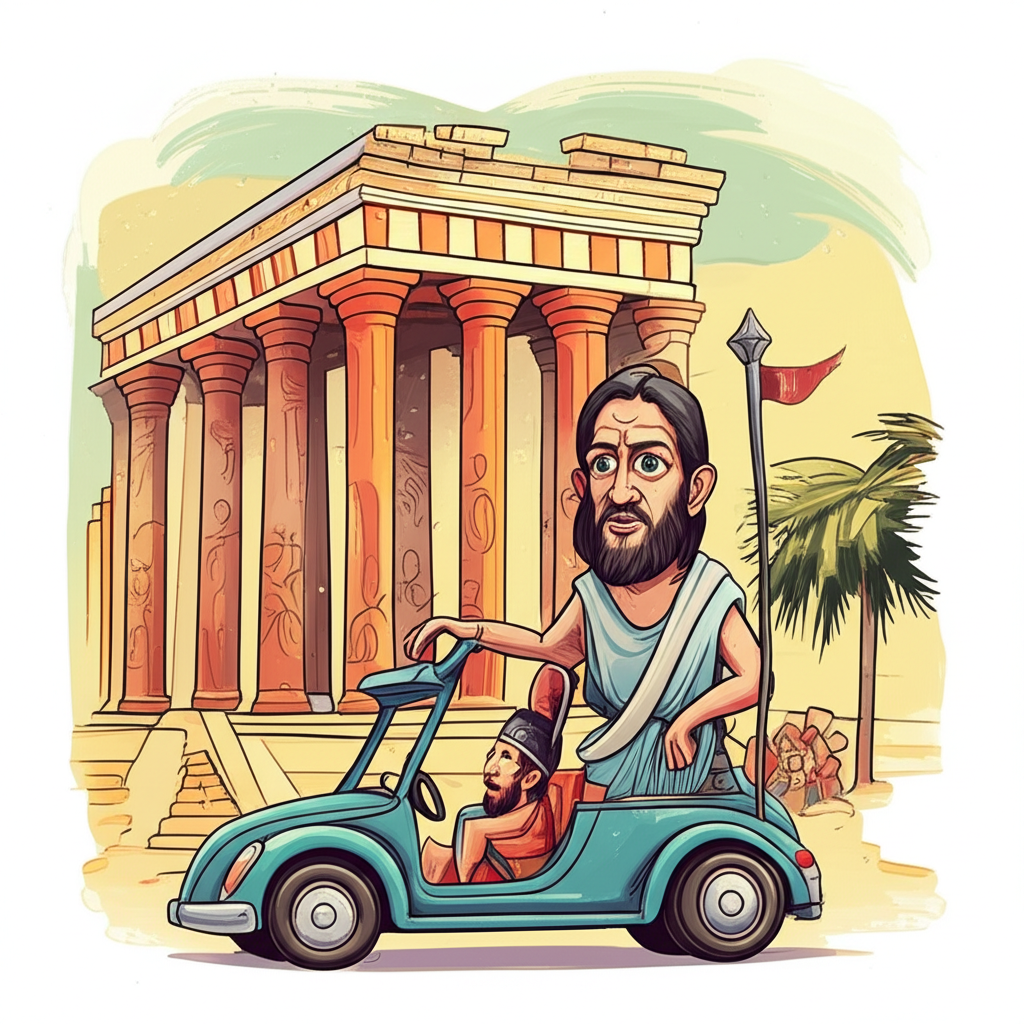
In the sun-drenched lands of ancient Greece, where towering mountains kissed the azure sky and the Aegean Sea whispered secrets to its shores, a rich tapestry of myths and legends was woven. These were not tales spun from scientific observation, but rather imaginative narratives crafted by the ancient Hellenes to understand the world around them, to grapple with the mysteries of life and death, and to explore the very essence of human potential and divine intervention. Among these enduring stories, the saga of Heracles, the mightiest of heroes, stands as a testament to human strength, perseverance, and the complex relationship between mortals and the unseen forces of their world.
This particular narrative, the Quest of the Styx, emerges from a culture deeply rooted in the reverence of powerful deities, the awe of natural phenomena, and a profound fascination with the afterlife. The ancient Greeks lived in a world where the boundaries between the human and the divine, the tangible and the ethereal, were often blurred. Their understanding of the cosmos was shaped by the Olympians, gods and goddesses who governed the heavens, the earth, and the underworld. The Styx, a river of legend, played a pivotal role in this cosmology, marking the boundary between the realm of the living and the shadowy domain of Hades.
At the heart of this myth lies Heracles, a figure synonymous with unparalleled strength and unwavering courage. He was the son of Zeus, the king of the gods, and Alcmene, a mortal woman. This divine parentage imbued him with extraordinary physical prowess, but also made him the target of Hera, Zeus’s jealous wife, who relentlessly pursued him with trials and tribulations throughout his life. Heracles, in these ancient tales, is not presented as a divine being himself, but as a demigod, a mortal hero whose extraordinary deeds often bordered on the superhuman. His symbolic attributes were those of raw power, indomitable will, and a relentless pursuit of justice, often tempered by his own human flaws and struggles. He represented the peak of human physical achievement, a symbol of what mortal beings, through immense effort and divine favor, could accomplish.
The Quest of the Styx, though not one of his canonical Twelve Labors, often features in the broader lore surrounding Heracles, particularly concerning his descent into the underworld. Imagine the scene: the air thick with the scent of cypress and the distant murmur of unseen currents. Heracles, his brow furrowed with determination, stands at the edge of a desolate landscape. Before him flows the Styx, a river of myth, its waters dark and sluggish, reflecting no sky above. This is no ordinary river; it is the threshold to the underworld, guarded by Charon, the ferryman of the dead.
Charon, in these ancient narratives, is depicted as a gaunt, spectral figure, his eyes like embers in the gloom. He is the silent gatekeeper, his weathered hands eternally gripping the pole of his skiff. He ferries souls across the Styx, but only those who can pay the required obol, a coin placed beneath the tongue of the deceased. Heracles, however, is alive, a vibrant spark in this realm of shadows. His quest might be to retrieve a soul, to face a specific challenge within Hades, or even to retrieve a symbolic object that holds power over the underworld.
As Heracles approaches, the air grows colder, carrying with it the whispers of the departed. Charon, his voice a dry rasp, challenges the living intruder. The tale then unfolds as Heracles, through his immense strength and cunning, overcomes this obstacle. Perhaps he battles the spectral guardians, or outwits Charon with a riddle, or even forces the ferryman to carry him across through sheer, unyielding will. The journey across the Styx is fraught with peril, not of physical wounds, but of despair, of the chilling touch of death itself, and the haunting presence of the souls that drift in its currents. Upon reaching the other side, Heracles would face further trials within the labyrinthine halls of Hades, encountering its grim ruler and its fearsome hound, Cerberus.
The symbolism inherent in the Quest of the Styx is multifaceted. For the ancient Greeks, the Styx represented the ultimate boundary, the immutable separation between life and death. The act of crossing it, even in myth, symbolized a confrontation with mortality, a profound existential challenge. Heracles’ journey through this infernal river could represent the triumph of the living spirit over the fear of death, or the immense courage required to face the unknown. It could also symbolize the hero’s enduring legacy, his ability to conquer even the dominion of Hades, ensuring his deeds would be remembered for eternity. The underworld itself, with its somber inhabitants and eternal torments, served as a stark reminder of the consequences of actions and the cyclical nature of existence.
In the modern world, the myth of Heracles and his encounters with the underworld, including the symbolic journey across the Styx, continues to resonate. These ancient tales are reinterpreted and reimagined in literature, film, and video games. Heracles, as a figure of immense strength and resilience, often appears as a protagonist or an archetype of the heroic journey. The Styx and its ferryman have become potent symbols of passage, transition, and the spectral realm. These interpretations often explore themes of courage, loss, the struggle against insurmountable odds, and the enduring power of myth to speak to universal human experiences.
It is important to reiterate that these are stories, echoes from a distant past, crafted by human hands and minds to explore the complexities of their world and their place within it. As Muslims, we recognize that only Allah is the true Creator and Sustainer of all existence, the ultimate power and authority. These ancient myths, while fascinating from a cultural and historical perspective, do not alter this fundamental truth.
The Quest of the Styx, like so many other myths from ancient Greece, serves as a window into the imagination and worldview of a past civilization. It speaks to their attempts to understand the unfathomable, to imbue their heroes with extraordinary qualities, and to explore the profound mysteries of life and death through narrative. These stories, passed down through generations, are a testament to the enduring human need for meaning, for heroes to inspire us, and for tales that, even in their fantastical nature, can offer insights into our own humanity. They are a vital part of our shared cultural heritage, reminding us of the power of storytelling and the rich tapestry of human imagination.





